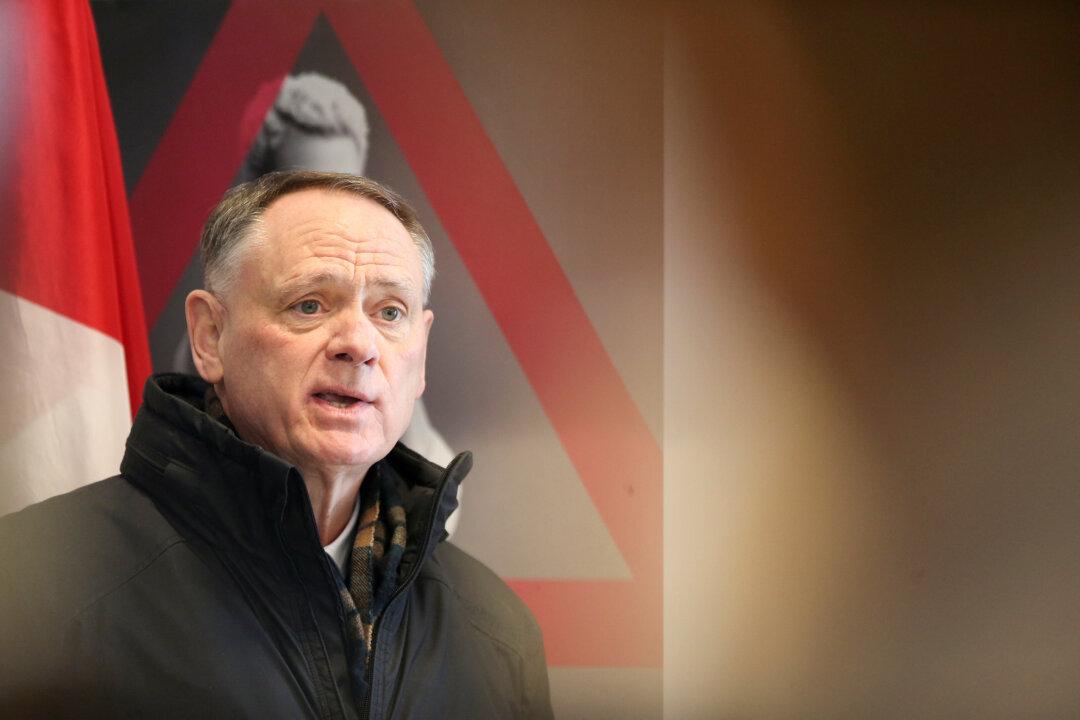HONG KONG—Thousands of Hong Kong university and school students swapped classes for democracy demonstrations on Sept. 2, the latest act of defiance in a protest that has plunged the Chinese-ruled city into its biggest political crisis in decades.
The boycott follows a weekend marred by some of the worst violence since unrest escalated more than three months ago, with protesters burning barricades and throwing petrol bombs, and police retaliating with water cannon, tear gas, and batons.
Riot police on Monday patrolled the MTR subway, where some of the most violent clashes have erupted.
Hundreds of students gathered on the hilltop campus of Chinese University, one of Hong Kong’s largest, taking turns to make speeches from a stage with a black backdrop embossed with “Students in Unity Boycott for our City.”
“I come here just to tell others that even after summer holidays end we are not back to our normal life, we should continue to fight for Hong Kong,” said one 19-year-old student who asked to be identified as just Chan.
“These protests awaken me to care more about the society and care for the voiceless,” Chan added.
On the first day of the new school year, secondary students were seen singing, chanting, and forming human chains, some wearing hard hats and masks. Many primary schools were closed because of a typhoon warning.

Matthew Cheung, Hong Kong government chief secretary, told reporters that schools were no place for protests.
Students have turned out in significant numbers at recent rallies and were also prominent during the 2014 pro-democracy “Umbrella Movement” that foreshadowed the current unrest.
“It’s very different from what happened back then. People are more mad now,” said Summer, a 20-year-old student who only gave his first name.
“I think this situation is a deadlock now. Both government and protesters won’t back down,” he added.
Protesters had called for a general strike but most people appeared to return to their daily lives with shops open, trains operating and workers making their way to offices across the global financial hub.
Thousands of protesters blocked roads and public transport links to Hong Kong airport on Sept.1 in a bid to draw world attention to what they see as ever-tighter control by Beijing over the city, despite the promise of autonomy.
Airport authorities said 25 flights were canceled on Sunday but transport services were largely back to normal.
China denies meddling in Hong Kong’s affairs and accuses Western countries of egging on the protests. It says Hong Kong is an internal affair.
Chinese Foreign Ministry spokesman Geng Shuang reiterated the central government’s support for Hong Kong leader Carrie Lam and her government.
“China’s central government supports chief executive Carrie Lam’s leadership ... to administer in accordance with the law and supports Hong Kong’s police tackling the violence and chaos in accordance with the law to restore order,” he told a press briefing.
Several editorials in Chinese state media condemned the protesters.
One published by the state news agency Xinhua warned that “the end is coming” for protesters who should “never misjudge the determination and ability of the central government.”

Anger at China
After leaving the airport on Sept. 1, some demonstrators targeted the MTR subway station in nearby Tung Chung district, ripping out turnstiles and smashing CCTV cameras, windows, and lamps with metal poles. Police moved in and made several arrests.Lam, a lightning rod for protesters’ anger at a city government they say is controlled by Beijing, said on her Facebook page on Monday that 10 subway stations were damaged by “violent offenders.”
Police and protesters had clashed in the evening on Aug. 31 in some of the most intense violence since unrest escalated in mid-June over concerns Beijing is eroding the freedoms granted to the territory under a “one country, two systems” agreement, including the right to protest and an independent judiciary.
John Lee, government secretary for security, told media that nearly 100 petrol bombs were thrown in various locations on Aug. 31 with two found on a 13-year-old boy who was arrested inside an MTR station.
The unrest began over a now-suspended extradition bill that would have allowed people in the city to be sent to China for trial in courts controlled by the Communist Party.
The turmoil has evolved over 13 weeks to become a widespread demand for greater democracy. China is eager to quell the unrest before the 70th anniversary of the founding of the People’s Republic of China on Oct. 1.
Hong Kong is facing its first recession in a decade.
Shares of Hong Kong rail operator MTR Corp. fell as much as 3.9 percent to HK$43.65, their lowest since Feb. 15.
With protesters and authorities locked in an impasse, speculation has grown that the city government may impose emergency law, giving it extra powers over detentions, censorship and curfews.
Lam has said the government would consider using all laws at its disposal to bring unrest to an end.





